Flashback:
– The Ug99 fungus: A time bomb for world wheat crop (Los Angeles Times)
– Airborne fungus Ug99 threatens global wheat harvest (The Guardian):
“The US army produced wheat rust as part of its biological weapons programme in the 1960s”
– UN alert: One-fourth of world’s wheat at risk from new fungus (World Tribune)
– Billions at risk from wheat super-blight (New Scientist)
– Wheat rust: The fungal disease that threatens to destroy the world crop (Independent, April 18, 2014):
Experts in Europe and Africa are racing to develop resistant grain varieties as university researchers predict the likely spread across continents of the air-borne spores of the fungus
Scientists are warning that wheat is facing a serious threat from a fungal disease that could wipe out the world’s crop if not quickly contained. Wheat rust, a devastating disease known as the “polio of agriculture”, has spread from Africa to South and Central Asia, the Middle East and Europe, with calamitous losses for the world’s second most important grain crop, after rice. There is mounting concern at the dangers posed to global food security.
Experts have been aware of the threat since a major epidemic swept across North America’s wheat belt in the 1950s, destroying up to 40 per cent of the crop. Since then, tens of millions of pounds have been invested in developing rust-resistant varieties of the grain. However, an outbreak in Uganda in 1999 was discovered to have been caused by a virulent mutation of the fungus. There has been alarm at the speed at which further mutations have subsequently developed and spread across continents.
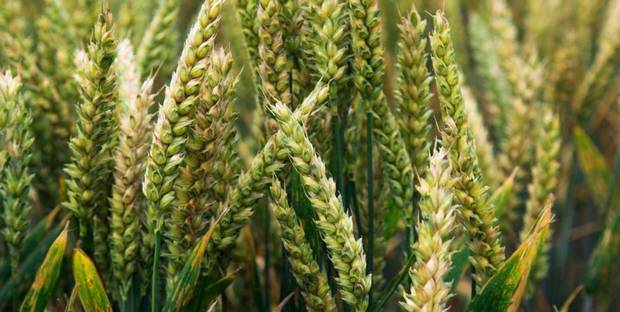
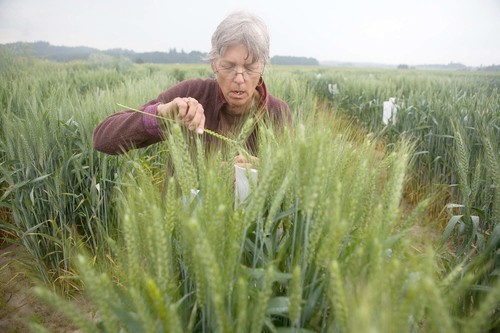
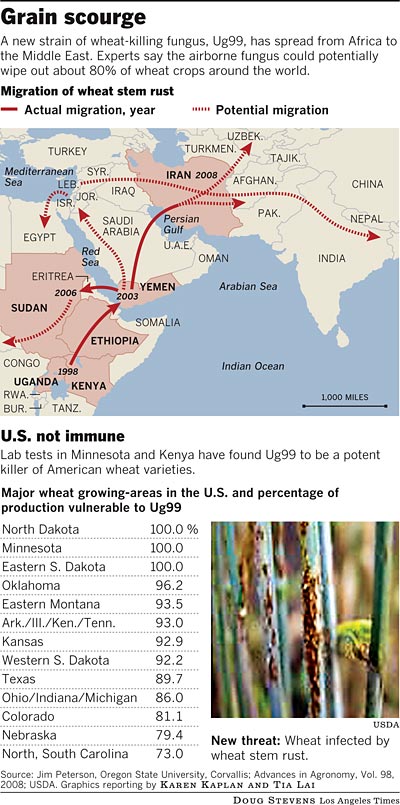
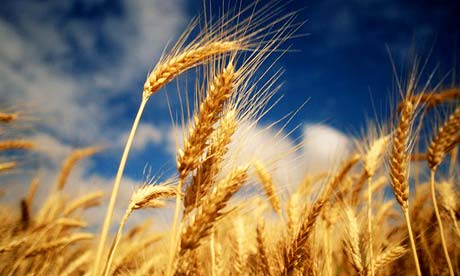

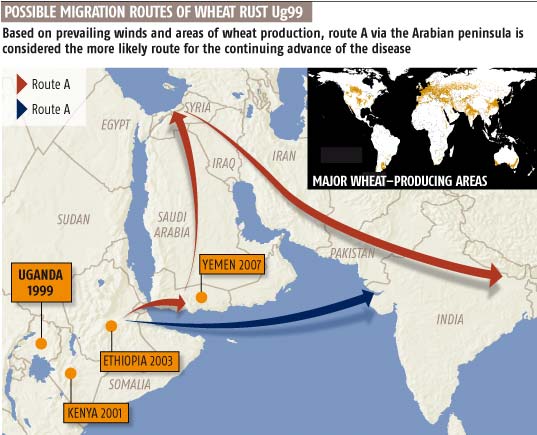 Possible migration routes of wheat rust Ug99
Possible migration routes of wheat rust Ug99